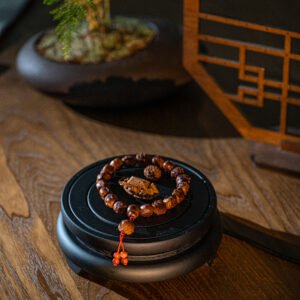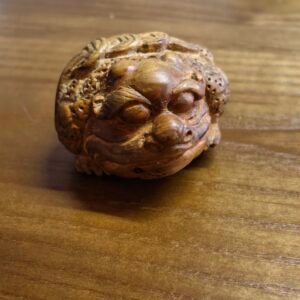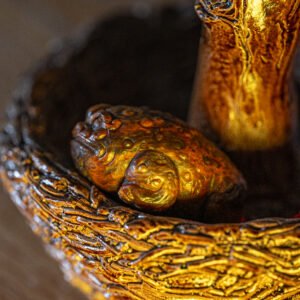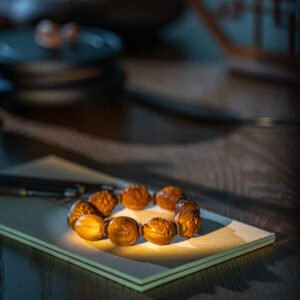ABOUT US
The Evolution of Nut Carving: A Rich Cultural Journey
Nut carving, an exquisite form of Chinese folk art, has a history spanning over a thousand years, weaving together craftsmanship, culture, and creativity. For those drawn to unique handcrafted treasures, understanding its evolution reveals why these tiny masterpieces hold such enduring appeal.
The story begins in ancient China, with early traces dating back to the Han Dynasty (206 BCE – 220 CE). Initially, nuts—particularly peach pits, walnuts, and olives—were carved for practical purposes, such as toggles for clothing or containers for small items. The hard, natural texture of nuts made them ideal for intricate work, and artisans soon realized their potential as canvases for art.
It was during the Tang Dynasty (618 – 907 CE) that nut carving began to flourish as a fine art. Court artisans and scholars embraced the craft, using it to depict scenes from poetry, mythology, and daily life. Peaches, long symbolizing longevity in Chinese culture, became a favored material. Carved peach pits from this era often featured delicate patterns of cranes, pine trees, and immortals—all symbols of a long and blessed life. These pieces were not just decorations but tokens of good fortune, exchanged among nobles and literati.
The Song Dynasty (960 – 1279 CE) saw further refinement in techniques. Artisans developed sharper tools and more precise carving methods, allowing them to create detailed narratives within the limited space of a nut. It was during this period that Buddhist themes, including the Eighteen Arhats, started appearing in nut carvings. These tiny sculptures became portable expressions of faith, carried by pilgrims and believers as reminders of spiritual values.
By the Ming (1368 – 1644) and Qing (1644 – 1912) dynasties, nut carving reached its golden age. Master carvers like Du Shoutian of the Ming Dynasty gained fame for their extraordinary skill. Du’s peach pit carvings, such as a miniature boat with intricately carved figures, doors that opened, and even tiny windows with lattice patterns, showcased the art form’s ability to turn a humble nut into a world of wonder. During the Qing Dynasty, nut carving became popular among the general public, with walnuts carved into playthings for adults—their smooth surfaces polished by hand over time, symbolizing patience and mindfulness.
What makes nut carving truly remarkable is its fusion of technical precision and cultural storytelling. Unlike large-scale sculptures, artisans must work within the nut’s natural shape, adapting their designs to its curves and imperfections. This harmony between human creativity and nature’s design gives each piece a unique character. Over the centuries, themes expanded to include landscapes, historical events, and even portraits, making each carving a snapshot of its time.
In modern times, nut carving has evolved while honoring tradition. Contemporary artisans blend ancient techniques with new ideas, creating pieces that appeal to both traditional collectors and modern art lovers. The rise of global appreciation has introduced this art form to audiences worldwide, with peach pit carvings featuring the Eighteen Arhats becoming particularly sought-after for their blend of spiritual symbolism and craftsmanship.
For Americans discovering nut carving today, these pieces offer more than beauty—they are windows into a culture that values patience, detail, and the art of finding grandeur in the small. Each carved nut carries the weight of centuries of innovation, a testament to the enduring power of human hands to create something extraordinary from the ordinary.
Whether displayed as a collectible, given as a meaningful gift, or cherished as a personal talisman, a hand-carved nut is more than an object—it is a piece of history, carved with care and passed down through generations.






